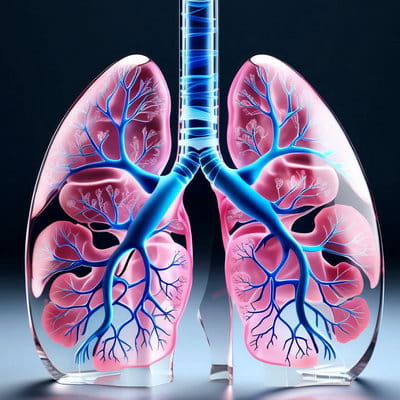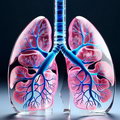
Chronic obstructive pulmonary disease is a chronic condition characterized by difficulty breathing and is often caused by long-term exposure to lung irritants such as tobacco, polluted environments, and respiratory infections. Damage caused by these factors leads to the destruction of lung tissue over time. COPD is the third leading cause of death worldwide, accounting for 3.23 million deaths in 2019. According to the World Health Organization, it is estimated that by 2030, COPD will become the third leading cause of death worldwide.
The impact of COPD goes beyond the physical limitations it imposes on patients. It can also affect their mental health, social interactions, and overall quality of life. Although traditional treatments help manage symptoms by opening the airways and reducing inflammation, they do not address the underlying cause of the disease or promote the regeneration of damaged lung cells. Finding effective treatments for this progressive disease is crucial.
Stem cell therapy offers potential relief by restoring this damaged lung tissue and improving lung function. Stem cells are undifferentiated cells that have the unique ability to develop into different types of specialized cells in the body. In the case of chronic obstructive pulmonary disease, stem cells can be used to regenerate damaged alveolar and bronchial cells in the lungs. When they're introduced into the lungs, they can do several things to promote tissue regeneration. They can differentiate into lung-specific cells, secrete factors that reduce inflammation, stimulate the growth of new blood vessels, and enhance the activity of existing lung cells.
One of the research methods involves the infusion of adult stem cells, which can be obtained directly from the patient's bone marrow or adipose tissue. These stem cells have shown the ability to differentiate into major lung tissue cell types, including alveolar and bronchial cells, after transplantation into injured lungs. Clinical studies have shown promising results, with patients experiencing improvements in lung function measurements like forced expiratory volume and diffusion capacity of the lungs for carbon monoxide.
Another approach involves reprogramming a patient's own adult skin or blood cells into iPSCs, which can then be coaxed to develop specifically into lung tissue cells. This strategy avoids potential rejection since the patient’s cells are used. Researchers hope to generate alveolar and bronchial cells from iPSCs that could be transplanted back into the patient's lungs to engraft and promote tissue regeneration.
Despite its promising potential, stem cell therapy still faces limitations that require continued research and development. One challenge is the limited availability of adult stem cells that can be harvested from the patient, especially in severe late-stage cases where lung damage is extensive. This highlights the need to optimize stem cell culture and amplification techniques.
However, as technology advances, many companies can provide ready-to-use stem cells. These cells could be prepared from different tissues and are not immunogenic, that is, they do not cause immune reactions and can be safely used in patients.















